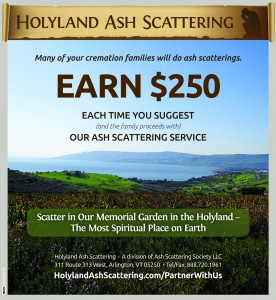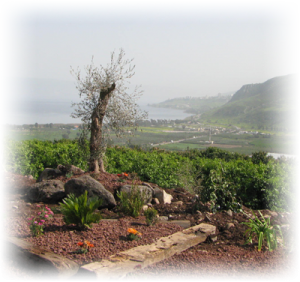Small headstones inscribed with heartfelt tributes peek out from the damp, freshly mown lawn at Pet Haven pet cemetery.
Plastic bouquets of flowers, potted poinsettias, a small, artificial Christmas tree and tiny American flags are among the trinkets and tributes placed near the tiny grave sites.
Many are so old that time and blowing sand have nearly worn smooth the names like Little Joe, Smokey, Tiger, Mr. Pumpernickel, Jake and Walter.
A shaded patch of green in the desert north of Palm Springs, the cemetery run by the Stewart family since 1964 is the resting place for more than 1,000 animals. They are mostly dogs and cats, but there are a few birds, rabbits and monkeys, and one pot-bellied pig.
It's also a place of celebrities, where the pets that belonged to President Gerald Ford and his family, Liberace and Michael Landon are buried.
But even in a place known for its boundless, even obsessive love of animals, the pet cemetery business isn't what it once was. The recession has turned pet burials into an unjustifiable luxury for some. Cremation and inurnment, rare a decade ago, is now common.
“We did 100 a year at the peak — seven to 10 years ago,” said Charles Stewart Jr., 61, who took over running the cemetery about five years ago after his father moved to Indiana and his brother passed away. “Now, we only do one a month.”
The cost to bury an animal is $895, which includes the burial site, a handmade pine casket, a headstone and perpetual care.
Pet Haven's monthly water bill runs about $400, and after paying gardeners and covering other costs, the Stewarts are losing money on the cemetery.
But no matter. The family made a commitment.
“My father and I love animals,” Stewart said. “It's not a money-making proposition, and it was never intended to be.”
Charles Stewart Sr., 88, who started the cemetery, comes out during the winter to check on the operation.
“It was running down a little bit, but we're trying to get it back in shape,” the elder Stewart said.
'Truly golden lady'
The entrance off Dillon Road is framed by an old whitewashed wooden sign, “Pet Cemetery” hand-painted in black letters, partly obscured by the withered fronds of an old palm tree.
A long sidewalk leads to a statue of Saint Francis of Assisi, where the patron saint of animals, a bouquet of faux pink tulips at his feet, stands watch.
At the center of the cemetery is a tall monument made of rough-edged bricks laid long ago, bearing statues of praying angels.
Buried along the monument's border are the cremated remains of pets, including two thoroughbred horses named Boy Doctor and Doctor Brut.
Markers range from simple stones bearing only the animal's name, to larger, more elaborate ones with photos, long inscriptions and sometimes the owner's name.
1959-1971
Nee-Na is a Good Girl
Edie Huff
1993-2002
Tom Boots, Esq.
Our Brave Boy
Five of Liberace's dogs are buried side-by-side, but the markers are so worn that most are unreadable. But still legible on each is the owner's farewell: “Love, Lee.”
President Ford's much-photographed presidential pet — a golden retriever named Liberty — is buried under a sprawling carob tree, next to one of her offspring, Misty.
The faded inscription on the headstone reads: “Liberty — Truly golden lady for our family — The Ford's”
The 8-month-old puppy was given to the president by his daughter Susan and new White House photographer David Hume Kennerly in the fall of 1974.
Halle Fetty of La Quinta has buried two dogs at the cemetery.
Her parents' black lab, Duffy, was hit by a car in 1989. Duffy's companion, a Yorkshire terrier named Baby, died in 1998.
Fetty is an infrequent visitor to the cemetery, but at home she has the cremated remains of three of her own dogs.
She's now thinking of having them interred with the remains of Duffy and Baby.
“I don't think I was ready to let go,” she said of her holding onto the ashes of her pets for so long.
She still recalls the special treatment Baby received when she was buried.
“When Baby passed away, she had a beat-up fabric Frisbee we brought to the cemetery,” Fetty said.
Fetty thought she would lay the toy on top of the little casket.
“But the man at the cemetery said, ‘Do you want me to put it in the box with her?' and he opened the lid of the box, lifted her head up and put it under her head and shoulders,” Fetty said.
The emotion of the experience has remained through the years.
“That's why I want the ashes of my other dogs buried there,” she said.
$150 for cremation
The remains of animals who died in the care of veterinarians were typically cremated and discarded unless owners made arrangements to have them buried.
Only over the past 20 years has the practice of keeping a pet's ashes become commonplace.
“It really started catching on 10 to 12 years ago,” said Michael Nicodemus, vice president of cremation operations at Hollomon-Brown Funeral Home/Lynnhaven Crematory in Virginia Beach, Va.
Nicodemus is president of the Cremation Association of North America.
“It was available earlier, but just like cremation is to humans, people were reluctant because they didn't know enough about the cremation process,” he said. “Just like they used to bury grandma, that's how they buried their pets. Now people are more educated.”
Wiefels Cremation & Funeral Service in Palm Springs began performing pet cremations in 2009 with a separate business, Pet Cremation Center by Wiefels.
“When we started out, they kind of dribbled in,” said Wiefels president Mark Matthews. “We got to be excited when it was one a day. Now it's 10 times what it was.”
Matthews said the company performs 2,000 to 3,000 pet cremations a year.
The basic cost is $150 and includes cremation, a plastic urn, a paw print, a lock of fur and a copy of “Rainbow Bridge,” a poem about the loss of a pet.
'Why don't you start a pet cemetery?'
Charles Stewart Sr. and his family moved to Palm Springs in 1958. They ran a boarding kennel and grooming business on Dillon Road, just west of Palm Drive.
“Then people started asking me, ‘Why don't you start a pet cemetery,'?” Stewart said.
There was no place in the desert to bury pets, yet he knew bereaved owners wanted a more dignified way to remember them.
“The people were burying them in the dump or in their yards,” he said.
It took more than a year, 1,000 signatures, the approval of the Riverside County planning department and the board of supervisors, but by 1964, the cemetery had been established.
He said it took about $10,000 to buy the land and start the cemetery. He leveled the land, poured the concrete sidewalks, built the brick monument and worked dirt and grass seed into the sand.
Desert Memorial Park in Cathedral City even donated the squares of sod that had been dug out for burials.
“The first pet we buried for $65,” the elder Stewart said. “The first 15 years we supported it, then it started paying for itself, breaking even.”
Buried in pine casket
Stewart Jr. said when the the pets are placed in the ground, they're situated so they're facing west, “Toward the setting sun.”
“All of our animals, just like President Abe Lincoln, are buried in a handmade pine casket. If it's good enough for President Lincoln, it's good enough for our babies,” said Stewart, who makes the caskets.
The animals, tucked in a blanket, are often accompanied to the grave with a favorite item, placed by their owners.
Although it's an ongoing financial struggle, the Stewarts are stalwart in their dedication and commitment to the cemetery and to the people they serve.
“This is a debt of honor,” Stewart Jr. said. “We're constantly doing work, maintaining the property. We've carried on the tradition of love.”
SOURCE: http://www.mydesert.com/article/20120205/NEWS01/202050309/Pet-Haven-place-animals-rest-peace
 A division of Ash Scattering Society LLC, Holyland Ash Scattering (HAS) specializes in scattering the cremated remains of loved ones in a private memorial garden in the Holyland in Israel. The company provides packaging for shipping remains, covers the cost of transporting the ashes, a professional scattering service and a personalized video tribute of the service, as well as a tribute certificate. Funeral professionals seeking more information about ash scattering, or that want to become a representative, can visit the company's website at http://holylandashscattering.com/funeraldirectorsor call 888-720-1961.
A division of Ash Scattering Society LLC, Holyland Ash Scattering (HAS) specializes in scattering the cremated remains of loved ones in a private memorial garden in the Holyland in Israel. The company provides packaging for shipping remains, covers the cost of transporting the ashes, a professional scattering service and a personalized video tribute of the service, as well as a tribute certificate. Funeral professionals seeking more information about ash scattering, or that want to become a representative, can visit the company's website at http://holylandashscattering.com/funeraldirectorsor call 888-720-1961.




















